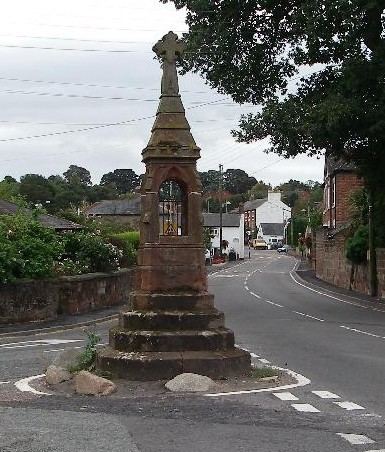Population 1,379 (2011) Civil parish Ruyton-XI-Towns Local time Saturday 10:52 AM | OS grid reference SJ393221 Dialling code 01939 | |
 | ||
Weather 10°C, Wind NE at 6 km/h, 57% Humidity | ||
Bellringing at ruyton xi towns shropshire
Ruyton-XI-Towns (/ˌraɪtən ᵻˈlɛvən taʊnz/ "ryetən eleven towns"), formerly Ruyton of the Eleven Towns or simply Ruyton, is a large village and civil parish in Shropshire, England. It has a population of around 1,500 people, falling to 1,379 at the 2011 Census, and lies on the River Perry. Nearby to the east is the large village of Baschurch and to the north the smaller village of Wykey.
Contents
Map of Ruyton-XI-Towns, Shrewsbury, UK
The village acquired its unusual name in the twelfth century when a castle was built, and it became the major manor of eleven local townships. The Roman numeral for eleven is included in its name. Some of the eleven ancient townships, mostly situated to the north and west of Ruyton, still survive as hamlets today; although some, like Coton, are just a collection of farm buildings. The eleven were Ruyton, Coton, Shotatton, Shelvock, Eardiston and Wykey, which remain in the parish; and Felton, Haughton, Rednal, Sutton and Tedsmore, now in the parish of West Felton.
Lying in the Welsh Marches, the castle was destroyed in 1202, rebuilt by 1313 and destroyed again by Owain Glyndŵr. Its ruins stand in the parish churchyard.
In 1308, an attempt was made to refound the town as New Ruyton. It was awarded a charter which briefly gave it the same status as the County of Bristol, but as raiding continued, it declined and lost most of its rights.
Notable buildings in the village include its parish church, part of which dates from the 1130s, and the gardens of Brownhill House.
Arthur Conan Doyle, while a medical student, worked as an unpaid assistant in the village for a Dr Eliot for four months in 1878, living in at Cliffe House. He later recalled Ruyton in his Memories and Recollections (1923) as "not big enough to make one town, far less eleven". Frederic Richardson Murray, later Archdeacon of Belize (1907-1918), was formerly a curate at the parish church.
The Preparatory school Packwood Haugh is north the village.
The parish war memorial is unique in Shropshire in being in the form of a cave, carved eight feet into the sandstone cliff of the Brownhill beside the road leading out of the village towards Baschurch. The idea of London architect Stanley Vaughan, who offered this after a visit to Ruyton, it was sculpted by local father-and-son stonemasons Warwick and Len Edwards, and unveiled in October 1920. The benches either side within the arch and the cross are all carved out of the rock, with the names of those known to have died in the First and Second World Wars listed on separate plaques. A third plaque, to Alfred Rogers whose name had been missed off the former plaque's list, was added in 2007.
Accessible by footpaths from south of the village is a sandstone hill, The Cliffe, still an area of common land, which is the northern section of the Nesscliffe Hill Country Park.
